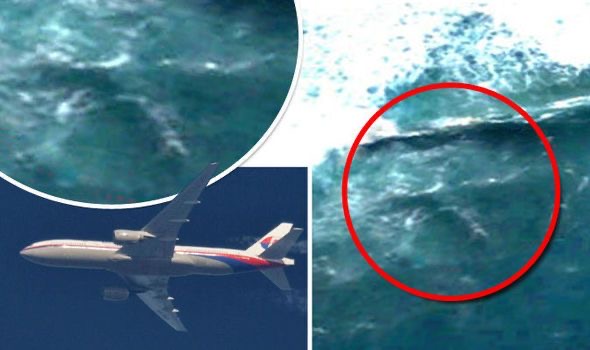
More than a decade after Malaysia Airlines Flight MH370 vanished without a trace, the mystery continues to haunt the aviation world and the families of the 239 people who were on board. The Boeing 777 disappeared on March 8, 2014, during a routine flight from Kuala Lumpur to Beijing, sparking one of the most extensive and expensive search operations in aviation history. Despite years of investigation and searches across vast stretches of the southern Indian Ocean, the main wreckage has never been found—only small debris pieces that washed ashore on islands off Africa and in the Indian Ocean.
Now, a new image circulating online has reignited public interest and speculation. The photo appears to show a large, fuzzy, aircraft-shaped outline on the ocean floor—somewhere in the deep waters off the coast of Western Australia, within the general area that investigators have long believed MH370 came to rest. While the image quality is poor, with the supposed fuselage barely distinguishable through murky blue tones, many are asking the same question: could this be the final resting place of MH370?
At first glance, the outline seems to resemble a wide-bodied aircraft with two wings and a long fuselage—roughly the dimensions of a Boeing 777. However, experts caution against jumping to conclusions. Underwater imaging can be deceptive; shadows, rock formations, or coral beds can create shapes that mimic man-made structures. Oceanographers and search analysts have stressed that without clearer, verified sonar data or underwater camera footage, it’s impossible to confirm whether the image shows an airplane or a natural formation.
Still, the location of the discovery has fueled renewed interest. The area reportedly aligns with the so-called “seventh arc,” a region identified by satellite data where the plane is believed to have run out of fuel before crashing into the sea. Earlier searches by the Australian Transport Safety Bureau (ATSB) and private companies like Ocean Infinity focused heavily on this region, using advanced sonar mapping technology. Although they covered more than 120,000 square kilometers of seabed, the ocean’s depth and terrain made the search extraordinarily difficult.
For many families of the passengers and crew, any new lead offers a mix of hope and heartbreak. Over the years, they have endured false alarms, unfounded theories, and conspiracy-driven speculation. The idea that the plane could finally be found brings both emotional relief and renewed pain. Confirming the wreckage would not only provide closure to loved ones but also allow investigators to determine what caused the tragedy—an answer that remains elusive even after countless expert analyses.
As of now, no official search teams have verified the new image or confirmed its coordinates. Ocean Infinity, which conducted the most recent search in 2018, has expressed willingness to resume operations if credible new evidence emerges. If the blurry outline beneath the waves proves genuine, it could mark the end of one of modern aviation’s greatest mysteries. Until then, MH370 remains both a technical puzzle and a deeply human story—a reminder of how a single flight can vanish into the vastness of the sea, leaving behind more questions than answers.


